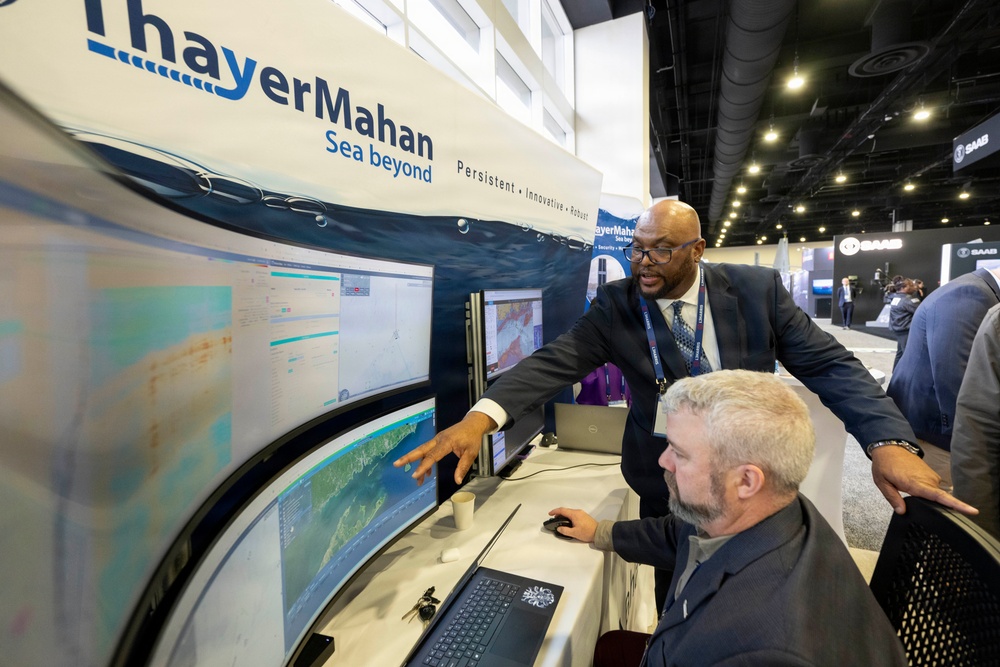DVIDS – News – Joint Typhoon Warning Center Celebrates 60th Anniversary
PEARL HARBOR, Hawaii (May 5, 2019) – The Joint Typhoon Warning Center (JTWC) celebrated its 60th anniversary this month. JTWC is a joint Navy and Air Force command that provides tropical cyclone (TC) forecasting and Intelligence, Surveillance and Reconnaissance (ISR) products for Department of Defense DOD bases and assets in the Pacific and Indian Oceans, as well as worldwide tsunami decision support.
“It’s an honor to work at the Joint Typhoon Warning Center, which serves such a vital mission for such a large area,” said Cmdr. R. Corey Cherrett, commanding officer of the JTWC. “Our Navy, Air Force, and civilian team works around the clock to monitor this threat to personnel and operations during all seasons.”
JTWC was established by the United States Pacific Command in 1959, combining several Air Force and Navy meteorology centers in the Pacific. The military first realized the importance of tropical cyclone forecasting after Typhoon Cobra, which is also known as “Halsey’s Typhoon.” U.S. forces operating east of Luzon, conducting air raids against Japanese forces in the Philippines in December 1944, were struck by a typhoon. In this event, 790 Sailors lost their lives, 3 ships sunk, 9 ships damaged and 146 aircraft lost or irreparably damaged. After World War II ended, another TC, Typhoon Louise in October 1945, caused severe damage to U.S. ships and shore facilities on the island of Okinawa, sinking or grounding more than 200 military and merchant vessels, and destroying many buildings and aircraft. JTWC was initially located on the island of Guam and then moved to its current location at Pearl Harbor in 1999.
“Unlike the National Hurricane Center, which receives data from the Air Force’s Hurricane Hunter planes to verify conditions inside a hurricane, we don’t have an aircraft reconnaissance program in the Pacific or Indian Oceans, so we rely primarily on satellite data to identify the current location and intensity of a storm across a large area of responsibility,” said Master Sgt. Richard Kienzle, flight chief of Air Force personnel at JTWC. The Air Force satellite analysts at JTWC administratively belong to the Air Force’s 17th Operational Weather Squadron on Joint Base Pearl Harbor-Hickam, which does aviation forecasting for multiple locations in the Pacific region.
JTWC uses data from satellites operated by multiple entities. The U.S. military’s Defense Meteorological Satellite Program (DMSP) microwave imagers allow analysts to see “through” the clouds and discern the center position and structure below. Examples include NOAA’s Geostationary Operational Environmental Satellite (GOES) geostationary infrared and water vapor-sensing satellites sense cloud tops. Sensors on scientific satellites operated by the European Space Agency and NASA can detect surface winds over the ocean. Surface or ship observations and radar data, when available, help the JTWC forecaster verify their decision with ground truth data as well. The JTWC forecaster then uses both global and regional numerical weather models run by supercomputers at U.S. Navy, U.S. Air Force, NOOA, Japan, the European Center for Medium Range Weather Forecast, the U.K. Meteorological Office, and more, to consider climatology and prevailing environmental and steering conditions to make their forecast.
JTWC’s overall area of responsibility for forecasting or repackaging other agencies’ official forecasts covers 89 percent of the world’s tropical cyclones. They issue forecasts for track, intensity and wind radii for 34 (tropical storm strength), 50 (storm force) and 64 kt (typhoon strength) winds up to five days in advance for systems that are greater than 25 kts in the western North Pacific Ocean or 34 kts anywhere else. While JTWC does not forecast for the eastern or central Pacific, they can repackage the official forecasts from the National Hurricane Center and Central Pacific Hurricane Center to coordinate emergency preparedness actions with the many DOD bases and assets that operate in and around the Hawaiian Islands, which are a focal point for 3rd Fleet operations including the Rim of the Pacific (RIMPAC) multinational exercise held every two years. JTWC’s Air Force satellite analysts also perform center position and intensity fixes on systems in the central Pacific Ocean, from 140°W to the international date line. Because JTWC forecasts for the Southern Hemisphere as well, they are busy year round; when the Northern Hemisphere is experiencing winter and it is no longer typhoon season, it is tropical cyclone season in the Southern Hemisphere.
While JTWC forecasts for many of the world’s TCs, they focus on ensuring safety of flight and navigation for U.S. military assets, and enabling TC preparedness for military bases. The World Meteorological Organization has designated certain countries, like Japan and India, to be the Regional Specialized Meteorological Centers in charge of forecasting for civilian populations in their immediate geographical area. However, JTWC’s TC forecasts are used by civilian populations in Guam, Micronesia and American Samoa as well.
In addition to real time forecasting, the JTWC also collaborates with the worldwide scientific community to adapt research to operations and improve satellite sensing abilities and forecast accuracy. JTWC’s latest innovation is the Two-Week Tropical Cyclone Formation Outlook, which analyzes environmental conditions, intraseasonal oscillations, and climatology, to provide a two-week lead time that tropical cyclogenesis is more probable in a certain area, allowing decision makers more time for planning. JTWC’s “Best Track” archive is used by scientists around the world, as it is a consistent and publicly available data set for all Pacific and Indian Ocean TCs.
JTWC (Task Element 80.7.7.1) is jointly staffed by U.S. Navy and Air Force personnel and falls under the operational control of Commander, Task Group 80.7/Commander, Naval Meteorology and Oceanography Command via Fleet Weather Center San Diego (Task Unit 80.7.7). U.S. Air Force personnel are administratively assigned to the 17th Operational Weather Squadron, a subordinate squadron of the 1st Weather Group and the 557th Weather Wing.
JTWC provides tropical cyclone reconnaissance, forecast, warning and decision support services for operational advantage to U.S. government agencies operating in the Pacific and Indian Oceans. Navy personnel at JTWC also provide tsunami advisory information and recommendations to shore installations and units, as well as impact forecasts for U.S. Pacific Fleet’s airborne Intelligence, Surveillance and Reconnaissance and decision support services to U.S. Pacific Command and its subordinate commands.
| Date Taken: | 05.02.2019 |
| Date Posted: | 05.21.2019 14:55 |
| Story ID: | 323292 |
| Location: | PEARL HARBOR, HI, US |
| Web Views: | 184 |
| Downloads: | 0 |
PUBLIC DOMAIN
This work, Joint Typhoon Warning Center Celebrates 60th Anniversary, by CPO Elisandro Diaz, identified by DVIDS, must comply with the restrictions shown on https://www.dvidshub.net/about/copyright.

 Private Internet Access gives you unparalleled access to thousands
of next-gen servers in over 83 countries and each US state. Your
VPN experience will always be fast, smooth, and reliable.
Private Internet Access gives you unparalleled access to thousands
of next-gen servers in over 83 countries and each US state. Your
VPN experience will always be fast, smooth, and reliable.
